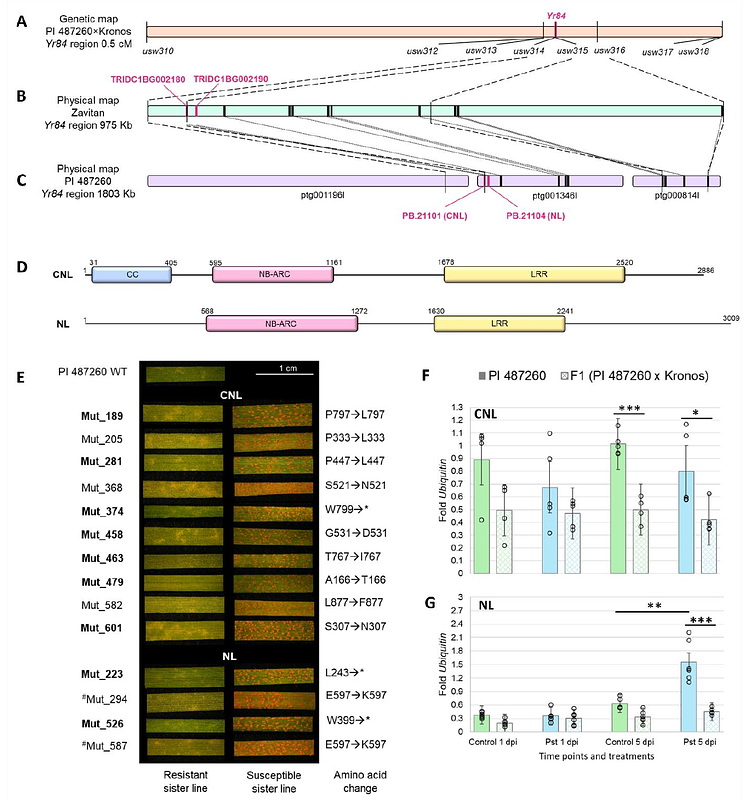Coordinated function of paired NLRs confers Yr84 -mediated stripe rust resistance in wheat

Coordinated function of paired NLRs confers Yr84 -mediated stripe rust resistance in wheat
Klymiuk, V.; Wiebe, K.; Chawla, H. S.; Ens, J.; Subramaniam, R.; Pozniak, C. J.
AbstractCloning of resistance genes expands our understanding of their function and facilitates their deployment in breeding. Here, we report the cloning of two genes from wild emmer wheat (Triticum turgidum ssp. dicoccoides) underlying Yr84-mediated stripe rust resistance using a combination of fine mapping, long read-sequencing and mutation-induced functional validation. In contrast to all previously cloned stripe rust genes, the incompletely dominant Yr84 phenotype is conferred through the coordinated function of paired nucleotide-binding leucine-rich repeats (NLR) genes CNL and NL. We hypothesize that based on their genomic organization, annotation, expression profiles and predicted protein structure, CNL functions as a sensor NLR (sNLR) responsible for effector recognition, and NL acts as a helper NLR (hNLR) initiating downstream resistance cascades. The CNL and NL lack an integrated domain(s) previously implicated in effector recognition by paired NLRs, therefore these findings contribute new insights into plant paired NLRs structure and molecular mechanisms of function.


